Heraldic Tour of Malta (2)
Other Depictions of Grand Magistral Arms
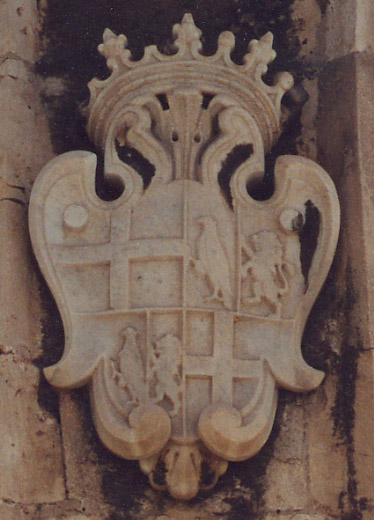
Arms of Grand Master Jean Parisot de La Vallette, on a victory column
in the main square of Birgu (Vittoriosa), the seat of the Order before
the construction of Valletta. The column commemorates the great siege
of 1565. It was erected in 1705 and renovated in 1760.
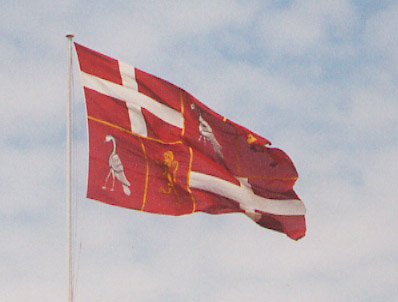
The standard of Grand Master La Vallette, flying over the building
on Republic Street where the Societa Filarmonica Nazionale La Vallette
is located. Obviously not a contemporary depiction, and not of hight
quality, but a stirring sight nonetheless.
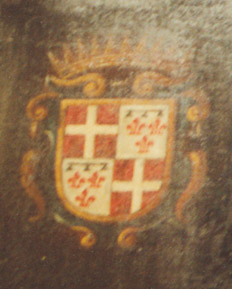
Arms of Grand Master Alof de Wignacourt (d. 1622), on his portrait in
the Museum of Fine Arts. (Caravaggio's famous portrait of the same man,
who was his employer, is in the Louvre, but has no coat of arms.)
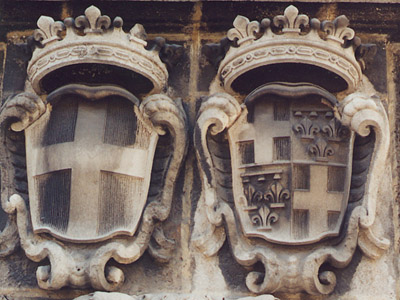
The same, above the door of the water tower in Floriana which he built
as part of an acqueduct to bring fresh water from Mdina to Valletta (1615).
This may be a later restoration (the stone work is in suspiciously good
condition, and the hatchings are anachronistic).
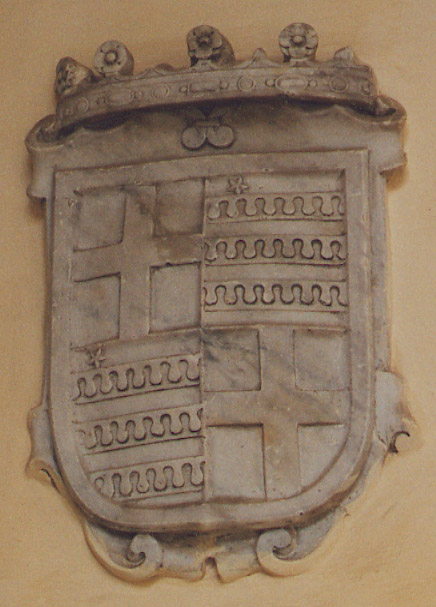
Grand Master Luis Mendes de Vasconcellos (d. 1623), from the courtyeard
of Neptune, palace of the Grand Masters, Valletta.
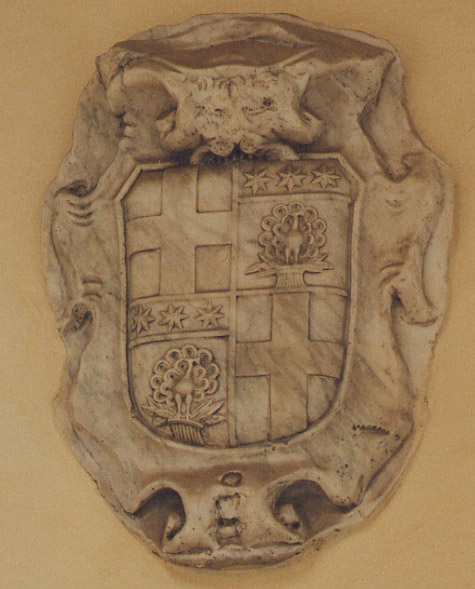
Grand Master Antoine de Paule (d. 1636), from the courtyeard of Neptune,
palace of the Grand Masters, Valletta.
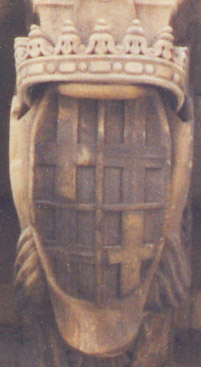
Grand Master Martin de Redin (d. 1660), from the balcony of the Palace
of the Grand Masters, Valletta.
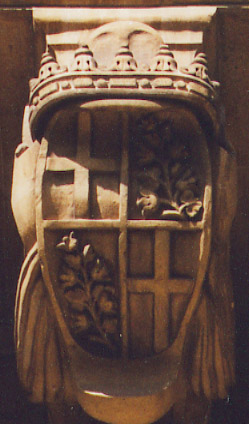
Arms of Grand Master Cottoner, on a mullion supporting the balcony
of the Palace of the Grand Masters, Valletta. I don't know which
Cottoner it is (Rafael of Nicola).
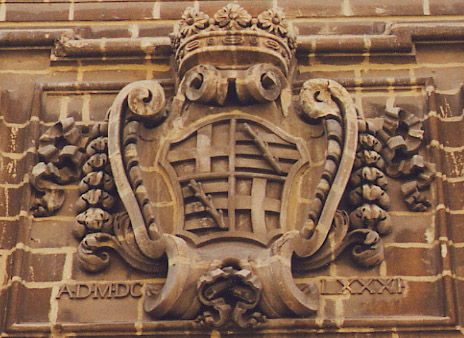
Arms of Grand Master Gregorio Caraffa, dated 1681, on the facade of
the church of St. Francis of Assisi, Republic Street, Valletta.
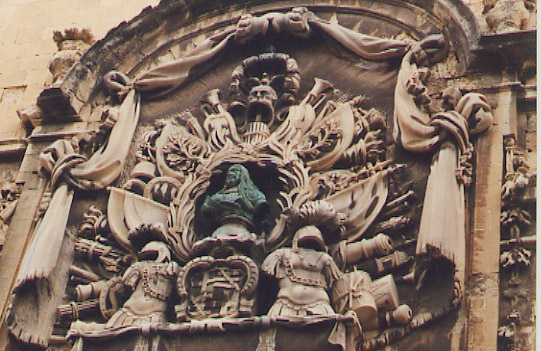
Grand Master Caraffa again, in person and with his arms, on the facade
of the Auberge of Italy which he renovated.
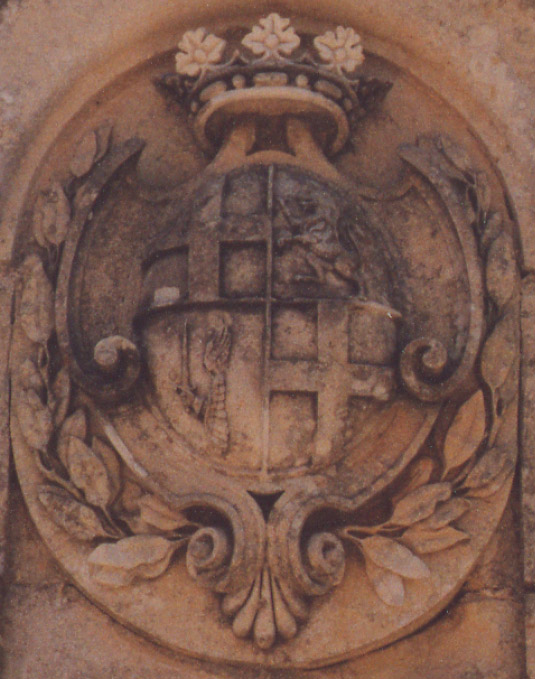
Arms of Grand Master de Vilhena, from the gates of Verdalla Palace,
the summer retreat of the grand masters.
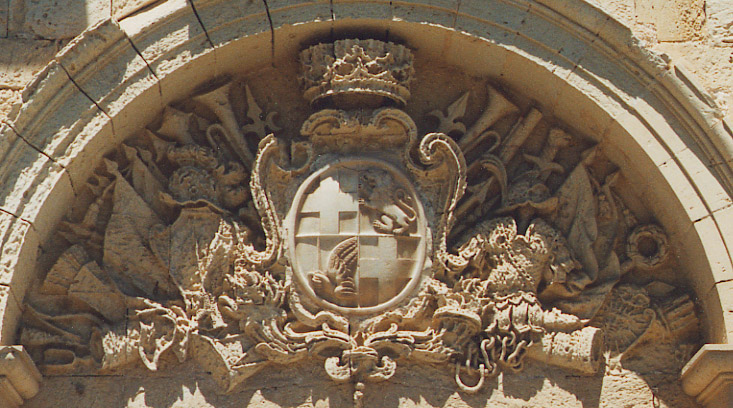
Arms of Grand Master de Vilhena, on the gate of Mdina, erected 1724
"anno MDCCXXIV principatus sui III" (in the third year of his principate).
The shield itself has most likely been restored (compare with the weathered
surface of the coronet and trophies).
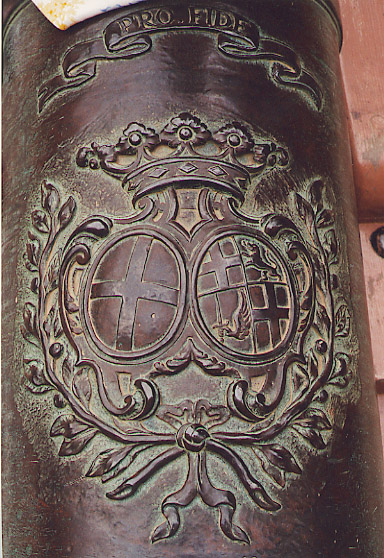
Arms of Grand Master de Vilhena, on a cannon of 1726 guarding the co-cathedral
of St. John, Valletta. Note the arms of the Order at dexter and the
motto of the Order ("Pro Fide") above.
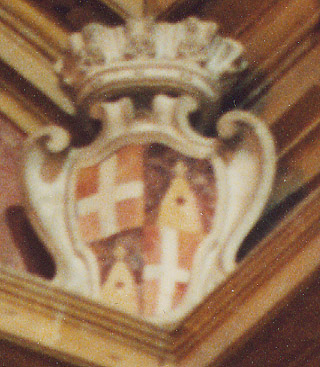
Arms of Grand Master Ramon Despuig (d. 1741), from the doorway to the
Oratory, co-cathedral of St. John, Valletta.
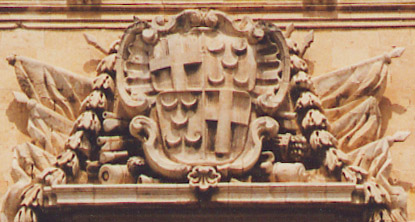
Arms of Grand Master de Pinto, on the façade of the Auberge
of Castile which he renovated.
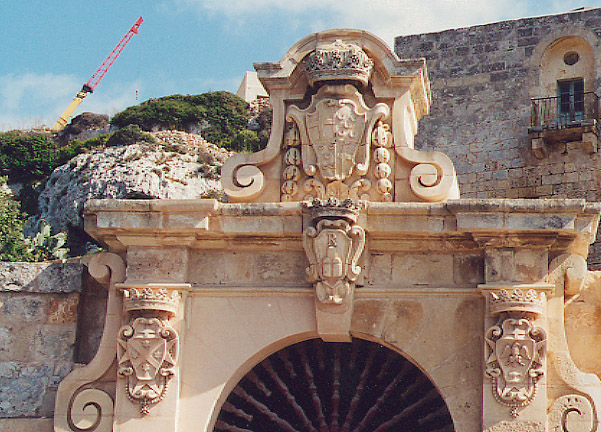
Arms of Grand Master Pinto above a doorway, on the road between St.
Paul's Bay and Mellieha. The arms immediately below are those of
the Monte di Redenzione degli Schiavi, a charitable foundation established
in 1607 under GM de Wignacourt, to finance the redemption of Christians
enslaved by the Moslems during raids (the Order did the same, of course,
and revenues from the redemption of Moslems captured by the Order formed
one of its sources of income). The other arms are obviously those
of bailiffs of the order. In the background, the national bird
of Malta (the construction crane).
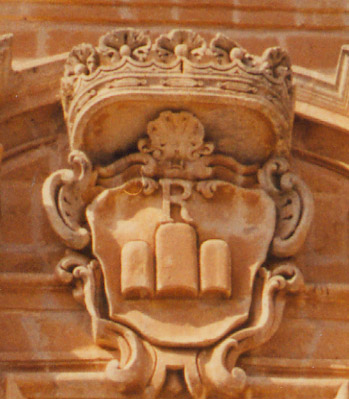
Arms of the Monte di Redenzione degli Schiavi, from the facade of the
nearby castle of Selmun, built by the Monte in the mid-18th c. The
Selmun Palace is now a hotel.
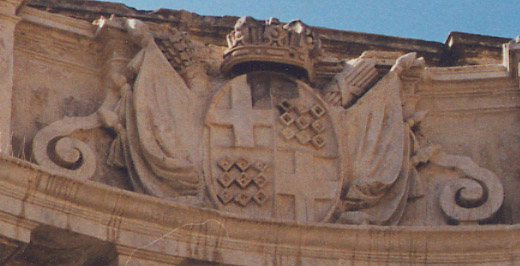
Arms of Grand Master de Rohan, on a fountain on Palace Square, Valletta.
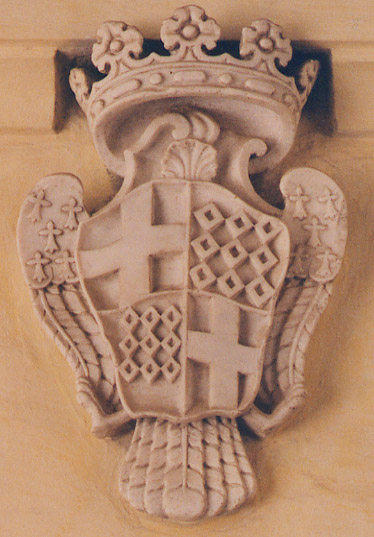
Arms of Grand Master de Rohan, courtyard of Prince Alfred, Palace of
the Grand Masters, Valletta.
The Langues
In 1301, the Order was organized in seven Langues, by order of precedence:
Provence, Auvergne, France, Spain, Italy, England, and Germany. In 1462,
the Langue of Spain was divided into Castile-Portugal and Aragon-Navarre.
The English Langue went into abeyance after the order's properties were
taken over by Henry VIII in 1540. In 1782, it was revived as the
Anglo-Bavarian Langue, containing Bavarian and Polish priories.
The structure of langues was replaced in the
late 19th century by a system of national associations.
In Rhodes, the knights had been housed in Auberges (Inns) segragated
by Langues. This structure was maintained in Birgu (1530-1571) and then
Valletta (from 1571). The auberges in Birgu remain, mostly undistinguished
16th c. buildings.
Valletta still has the auberges of Castile-Leon (1574; renovated
1741 by GM de Vilhena, now the Prime Minister's offices), Italy (renovated
1683 by GM Caraffa, now the post-office), Aragon (1571, now Ministry of
Economic Services), Bavaria (former palazzo Carnerio, purchased in 1784
for the newly formed Langue), Provence (now Museum of Archaeology).
The auberge of Auvergne was damaged in World War II and replaced with Law
Courts. The auberge of France was destroyed in World War II as well.
In 1604, each Langue was given a chapel in the conventual church of
St. John and the arms of the Langue appear in the decoration on the walls
and ceiling:
-
Provence: St. Michael
Jerusalem
-
Auvergne: St. Sebastian
Azure a dolphin or
-
France: conversion of St. Paul
France
-
Castile and Leon: St. James the Lesser
Quarterly Castile and Leon
-
Aragon: St. George [the church of the Langue is consecrated to Our
Lady of the Pillar]
Per pale Aragon and Navarre
-
Italy: St. Catherine
Azure the word ITALIA in bend or
-
England: Flagellation of Christ
[no arms visible; in Rhodes the Langue used the arms of England, quarterly
France and England]
-
Germany: Epiphany
Austria born by a double-headed eagle displayed sable
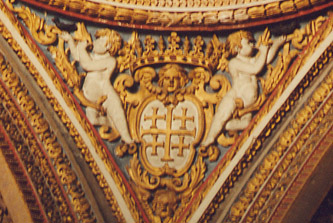
Arms of the Langue of Provence, on the ceiling of its chapel, St. John,
Valletta.
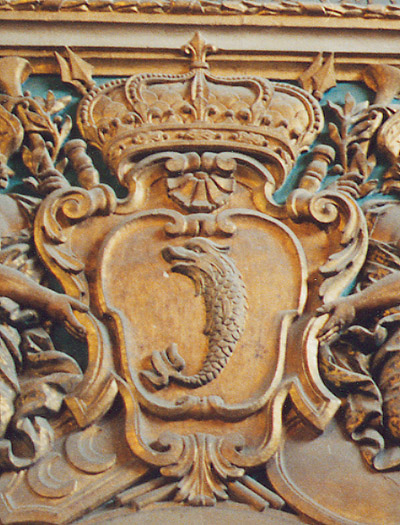
Arms of the Langue of Auvergne, on the wall of its chapel.

Arms of the Langue of Castile and Portugal, atop the façade
of its Auberge (now the Prime Minister's residence).





















